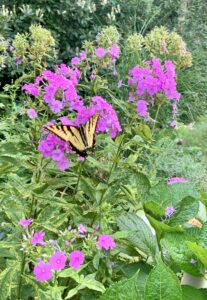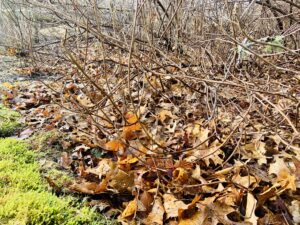Gardening for Wildlife: Spring has Sprung!
BY MEGHAN DOUGLAS HILL
Spring has sprung, which means gardening is on the minds of many of us!
As you set out to spruce up your beds, consider some steps you can take to ensure your yardwork supports local biodiversity, and is done in harmony with the native wildlife that has overwintered in your yard.
Love the Leaves
Not only do decomposing leaves provide important nutrients for your garden, leaves also provide vital wildlife habitat for beneficial insects and pollinators, such as butterflies and native bees, turtles and toads, birds, mammals and invertebrates, which rely on leaf litter for food, shelter and nesting material.
Waiting until the temperature is consistently in the 50’s before removing leaves and stalks will provide the chance for the creatures to awaken from their winter slumber safely, and also the opportunity for you to observe them as they emerge!
Provide the Essentials
A thoughtfully structured garden and landscape can provide a year-round source of food for wildlife. Native flowers, plants and shrubs offer nectar, pollen, and seeds for butterflies, insects, birds and other animals, and are the ecological basis upon which life depends.
There are several options for providing water sources for backyard wildlife. For small spaces, consider adding bird baths and container water gardens. For larger properties, there is the possibility of adding a rain garden, pond, or backyard marsh.
To provide important cover for birds and small animals, find a place in your yard where you can create a brush pile with all the sticks and debris you collect during your seasonal cleanup. Brush piles are a very important habitat element for many different kinds of wildlife, as they provide cover from predators and safe spaces for nests.
Meghan Douglas Hill serves as Vice President, contributing to all aspects of Orenda’s mission.


